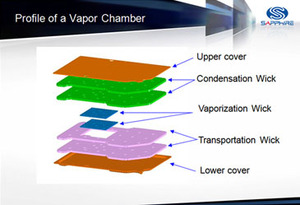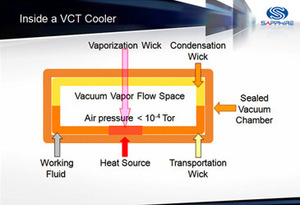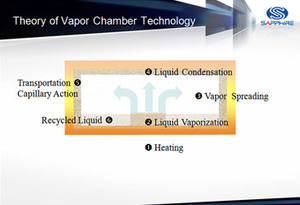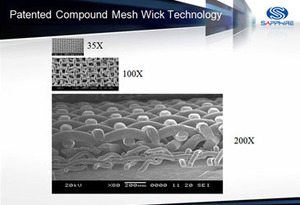Radeon HD 3870 512MB Atomic card design
Sapphire had a long, hard look at the ATI reference design and decided that it wasn’t good enough for where it wanted to go with its Atomic brand. The dual-slot cooling solution as the major downside and it was something that the company worked hard to change.The problem that Sapphire had though was that it needed to at least match the reference card in terms of both performance and (a lack of) noise pollution. And, from our own experiences at least, the reference cooling solution has been very quiet in both 2D and 3D modes.
The company’s engineers went to work and came up with a single slot cooling solution aided by something Sapphire has called Vapour Chamber Technology – a new cooling method that bears some resemblance to traditional heatpipe technology. At the very least, it uses the old principle of moving heat away from the source to a much cooler area as quickly as possible.
VCT achieves this by using a sealed chamber with very low air pressure inside. The inside walls of the chamber are lined with a vaporisation wick that is saturated with a liquid (in this case, Sapphire has used pure water) and, as the chamber heats up, the fluid inside the vaporisation wick heats up and vaporises. This process causes it to move around the chamber until it hits the condensation wick – the coolest area in the chamber, as it’s the surface that comes into direct contact with the chamber’s top cover.
At this point, the liquid condenses as it is cooled and heat is then dissipated to the upper cover that then passes out into the aluminium heatsink fins. Once this process has been completed, the liquid will return to the heat source and is absorbed by the transportation wick using a capiliary action before being moved back towards the vaporisation wick. This process then repeats itself to continually draw heat away from the source.
According to the company, the benefit of the technology is that the process is omni-directional—unlike a traditional heatpipe solution, which can only transfer heat in one direction—meaning that it’s potentially more effective and efficient. Sapphire also said that there is 50 percent less thermal resistance and also double the heat conductivity properties of copper.
So, while the design sounds plausible in theory, it will count for nothing if it doesn’t live up to the promises in practice. Before we get onto cooling performance itself though, we should have a look at the card.
First things first, Sapphire has at least delivered on the single slot promise and we can also happily state that this thing is damn quiet – so damn quiet that I couldn’t quantify how quiet it was in the office. It’s quieter than the Zalman CNPS-9500 coolers I use on my graphics test systems, that’s for sure. I turned off as much of the hardware in the office as I possibly could, and it the Zalman cooler was definitely louder. But I was still undecided on just how quiet this thing was, because you can’t exactly hear a pin drop in the bit-tech offices, even with all of the PCs turned off.
I decided that the best course of action was to take the card home to test it in a quieter environment because I didn’t believe it was as quiet as I first thought. I installed the card in my Antec P182 chassis, which is kitted out with a Scythe Infinity CPU cooler and all case fans set to low. Even in this environment, the card was still inaudible – I think that’s pretty unprecedented for a single-slot Radeon HD 3870!
Aside from the cooling solution, Sapphire has stayed fairly close to the reference design PCB and the featureset is essentially the same. There is a pair of dual-link DVI ports and a TV-out connector on PCI bracket; both of the DVI connectors support HDCP at resolutions up to 2560x1600 and can also carry audio if you connect the DVI-to-HDMI converter (supplied in the box) – pretty standard stuff for a Radeon HD 3000-series product.
Warranty
The Sapphire Radeon HD 3870 comes complete with a two-year warranty that includes cover for parts and labour. During the first year of the product’s life, your point of contact should be the retailer. However, if you’re having problems getting hold of the retailer (or the retailer goes out of business), you should contact Sapphire’s support team directly. During the second year of the warranty period, you should talk directly with Sapphire.This warranty is nothing special, but to be fair to Sapphire it’s inline with what most other AMD partners offer and the warranty period is consistent in every corner of the world.

MSI MPG Velox 100R Chassis Review
October 14 2021 | 15:04
















Want to comment? Please log in.